FDA expands label for Roche's eye disease implant Susvimo

The renaissance of Roche's refillable ophthalmic implant Susvimo has continued with FDA approval for use in patients with diabetic macular oedema (DME), a leading cause of vision loss and blindness.
The new indication adds to the 2021 approval of Susvimo (ranibizumab) for 'wet' or neovascular age-related macular degeneration (AMD), and comes just a few months after Roche returned the drug to the US market after a two-year hiatus.
Susvimo was withdrawn in 2022 due to manufacturing defects, specifically a defective seal in the implant that allowed the active drug to leak out more quickly than it should. It returned to the market in the middle of last year – after updates to the implant and refill needle – as an alternative to AMD therapies that require regular injections into the eye, sometimes as often as once per month.
Roche said that the new approval now makes Susvimo "the first and only continuous delivery treatment that offers an alternative to regular eye injections to treat […] DME," which affects more than 29 million people worldwide.
The portal delivery system (PDS) used in the Susvimo implant is about the size of a grain of rice and is designed to deliver active drug continuously for at least six months, allowing patients to manage AMD and now DME with just two treatments a year.
The new indication is a boost to Roche's sales hopes for Susvimo, as the number of patients with DME is higher than the wet AMD population and is rising in step with the global increase in the prevalence of diabetes.
The active ingredient in Susvimo is the same VEGF inhibitor in Roche's Lucentis, which has been cleared by the FDA for a long list of eye diseases, including AMD, DME, other forms of macular oedema, diabetic retinopathy, and myopic choroidal neovascularisation (mCNV), but lost patent protection in the US in 2021. At its height, Lucentis brought in US sales of $1.6 billion, but sales declined sharply to around $160 million last year due to biosimilar competition.
Susvimo and VEGFxAng-2 bispecific antibody Vabysmo (faricimab) were intended to step into the breach and maintain Roche's franchise in eye disease. While Susvimo hit the buffers, Vabysmo has delivered on its promise with sales topping $4.3 billion in 2024.
Roche hasn't yet broken out sales of Susvimo or given guidance on its expectations for the relaunched product, although analysts were predicting it could make $1 billion or more a year when it was first introduced.
Now, it remains to be seen whether it will be able to claw market share away from rivals like Bayer and Regeneron's Eylea (aflibercept), which has been approved by the FDA in a new, high-dose format that reduced injection frequency from every two months to every four months in some patients.
The implant scored well in patient-reported outcome (PRO) when it was first available, thanks to the reduced need for injections, although cases of endophthalmitis – an inflammation of the intraocular fluids – were cited as a potential barrier to use by ophthalmologists.
Roche is also looking at new uses for the PDS, including a new VEGFxAng2 bispecific (RG6120) that has been specifically designed to work with the implant.












